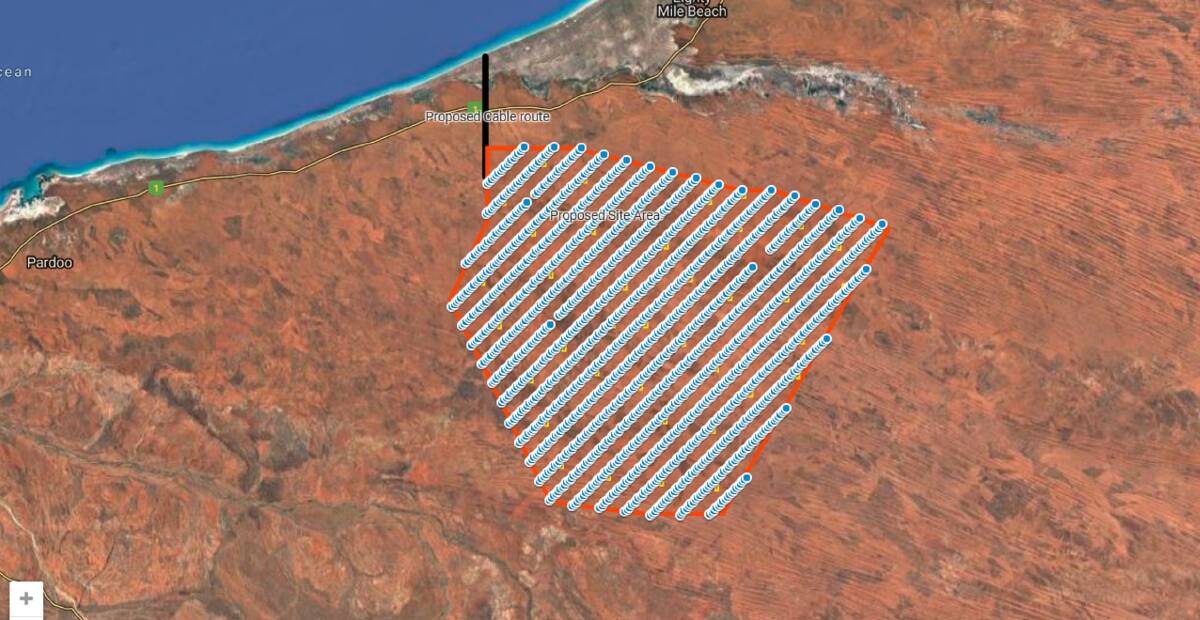A Newcastle-based company is set to begin its fourth large-scale wind farm in NSW.
Subscribe now for unlimited access.
or signup to continue reading
CWP Renewables has announced its latest project as the $500 million Bango wind farm, to be established about 30 kilometres north of Yass.
The project will power more than 100,000 NSW households annually.
On a much larger scale, the company is planning a $30 billion wind and solar project in the East Pilbara region of Western Australia.
The development, known as the "Asian Renewable Energy Hub", would become the world's largest wind and solar project.
It would generate up to 15 gigawatts of power across 6500 square kilometres of land.
As for the Bango wind farm, CWP chief operating officer Ed Mounsey said construction of 46 wind turbine generators for the project would begin this month, following a decade of planning.
The project's components will probably be imported to Australia through the Port of Newcastle.
Snowy Hydro has bought about 40 per cent of Bango's power capacity under a 15-year agreement.
CWP has developed its NSW portfolio from its Newcastle office. Its other NSW wind farms are based near Mudgee, Glen Innes and Nimmitabel.
Swiss private equity firm Partners Group is investing more than $700 million in CWP projects.
Energy analyst Tim Buckley said CWP was a "serious player".
"These guys are absolutely world class in the way they operate and what they've actually achieved," Mr Buckley said.
"It's a small private company, yet it built the biggest wind farm in Europe, for example, about 10 years ago. It's still the biggest today."
The $1.8 billion Fantanele-Cogealac Wind Farm project is based in Romania.
Mr Buckley said the Pilbara project was "enormous".

"It's a multi-decade, nation-building project," said Mr Buckley, of the Institute for Energy Economics & Financial Analysis.
The project would provide power equivalent to about one fifth of Australia's annual electricity needs.
Renewable energy created from the Pilbara project would be used to manufacture clean hydrogen for export and domestic use.
"People like Alan Finkel, the chief scientist, see an enormous opportunity for Australia to be the world's biggest exporter of zero emissions hydrogen," Mr Buckley said.
He added that Australia was an "energy superpower today" and could be in future through hydrogen.
"We're the second or third biggest exporter of fossil fuels in the world," he said.
"LNG [liquefied natural gas] is worth $50 billion a year, coking coal is $40 billion and thermal coal is $25 billion."
He said it would be difficult for hydrogen to achieve this combined level, but it "could be the next big super export for Australia".
In the domestic market, Mr Buckley said "a lot of people are now talking about hybrid wind-solar battery projects".
"You'd effectively have wind and solar running 50 to 60 per cent of the time. Then you use a battery to firm it up, so it's available 70 or 80 per cent of the time."
He said wind power would play "a significant role" in the Australian energy market.
"You'd probably say one-third rooftop solar with batteries, one-third solar utility scale and one third wind," he said.

